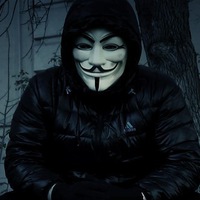
Сравни костюмы фараона, китайского императора, французского короля. Какие символы подчеркивают их
власть, могущество, особое положение человека в обществе?  0
0
 0
0
Ответы на вопрос
 Внимание! Ответы на вопросы дают живые люди. Они могут содержать ошибочную информацию, заблуждения, а также ответы могут быть сгенерированы нейросетями. Будьте внимательны. Если вы уверены, что ответ неверный, нажмите кнопку "Пожаловаться" под ответом.
Внимание! Ответы на вопросы дают живые люди. Они могут содержать ошибочную информацию, заблуждения, а также ответы могут быть сгенерированы нейросетями. Будьте внимательны. Если вы уверены, что ответ неверный, нажмите кнопку "Пожаловаться" под ответом.

Ответ:
Отличительные знаки фараона – платок для головы либо корона. Также правители носили золотые обручи, выполненные в форме змеи. Головной убор назывался «урей» и являлся символом власти точно так же, как скипетр, накладная борода.
В Древнем Китае также имели своё значение: желтый цвет считался цветом императора.
Старая китайская пословица гласит, что царствование каждого императора начинается, как только он надевает свою новую мантию.
Французский король Людовик XIV - монарх с неограниченной властью - стремился выставить напоказ чрезмерную роскошь и пышность своих нарядов. Костюм украшали алмазы, бриллианты, цветные камни, золото и серебро. Дополняли костюм короля роскошный парик и широкополая шляпа с огромными страусовыми перьями.
 0
0
 0
0

Comparison of the Costumes of a Pharaoh, Chinese Emperor, and French King
When comparing the costumes of a Pharaoh, Chinese Emperor, and French King, it is important to note that these costumes were designed to symbolize power, authority, and the special status of these individuals in society. Let's explore the symbols that underline their power, magnificence, and unique position in society.
Pharaoh: The costume of a Pharaoh in ancient Egypt was rich in symbolism and conveyed the ruler's divine status and authority. The Pharaoh's attire typically included the following symbols:
1. Nemes headdress: The Pharaoh wore a striped headcloth called the nemes, which was adorned with a cobra known as the uraeus. The uraeus symbolized the Pharaoh's power and protection.
2. Double crown: The Pharaoh often wore a double crown, known as the pschent, which represented the unification of Upper and Lower Egypt under the Pharaoh's rule.
3. False beard: Pharaohs wore a ceremonial false beard, known as the divine beard, which symbolized their divine status and association with the gods.
4. Egyptian jewelry: Pharaohs adorned themselves with elaborate jewelry, including necklaces, bracelets, and rings, often made of precious metals and gemstones. These accessories symbolized wealth and luxury.
Chinese Emperor: The costume of a Chinese Emperor, especially during the imperial era, was designed to emphasize the ruler's authority and position as the Son of Heaven. The symbols that highlighted their power and special status included:
1. Dragon robe: The Emperor wore a dragon robe, which was adorned with intricate dragon motifs. The dragon was a symbol of imperial power and represented the Emperor's connection to heaven.
2. Imperial yellow: Yellow was considered the color of the Emperor and was reserved exclusively for imperial use. The Emperor's robes were often made of yellow silk, symbolizing his supreme authority.
3. Dragon crown: The Emperor wore a crown adorned with dragon motifs, symbolizing his divine right to rule and his connection to the celestial realm.
4. Imperial insignia: The Emperor carried various imperial insignia, such as the imperial seal and jade tablets, which represented his authority and legitimacy as the ruler.
French King: The costume of a French King, particularly during the monarchy era, was designed to showcase the ruler's power and grandeur. The symbols that emphasized their authority and special position included:
1. Crown: The French King wore a crown, often adorned with precious gemstones, which symbolized his royal authority and divine right to rule.
2. Robe of state: The King wore a robe of state, typically made of luxurious fabrics and embellished with intricate embroidery. This robe symbolized the King's regal status and magnificence.
3. Fleur-de-lis: The fleur-de-lis, a stylized lily, was a prominent symbol associated with the French monarchy. It represented the King's divine right to rule and his connection to the Virgin Mary.
4. Scepter and orb: The King held a scepter and orb during ceremonial occasions, symbolizing his authority and dominion over his kingdom.
In conclusion, the costumes of a Pharaoh, Chinese Emperor, and French King were carefully designed to symbolize their power, magnificence, and unique position in society. Each costume incorporated specific symbols that represented their authority, divine status, and connection to the celestial or divine realms.
 0
0
 0
0
Похожие вопросы
Последние заданные вопросы в категории МХК
-
Математика
-
Литература
-
Алгебра
-
Русский язык
-
Геометрия
-
Английский язык
-
Химия
-
Физика
-
Биология
-
Другие предметы
-
История
-
Обществознание
-
Окружающий мир
-
География
-
Українська мова
-
Информатика
-
Українська література
-
Қазақ тiлi
-
Экономика
-
Музыка
-
Право
-
Беларуская мова
-
Французский язык
-
Немецкий язык
-
МХК
-
ОБЖ
-
Психология
-
Физкультура и спорт
-
Астрономия
-
Кыргыз тили
-
Оʻzbek tili




















